07775 853 348

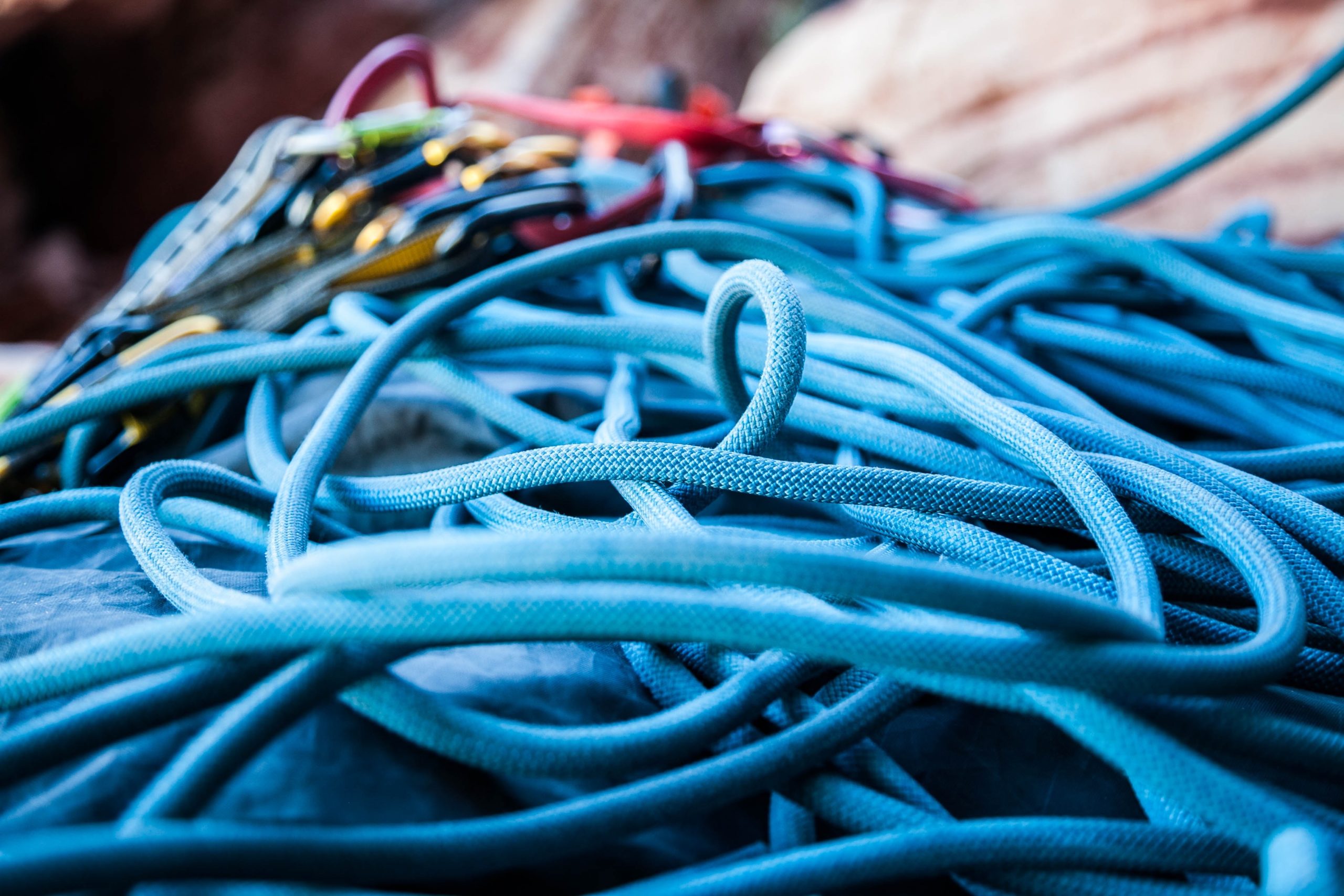
Choosing the right rope from many climbing ropes can feel overwhelming, especially if you are fairly new to climbing. What length do you buy? Which type of rope? Skinny or slightly thicker? Treated or untreated? Dynamic or static? Or even which colour do I buy? This article aims to demystify these choices, helping you find the rope that best suits your climbing needs.
Firstly, let’s start by exploring the different types of climbing ropes: single, twin, half, and static ropes.
Single ropes are designed to be used alone, hence the reference to “single”; a single rope system. They come in diameters ranging from 8.9mm to 11mm, with manufacturers always trying to make them thinner and lighter.
You can use single ropes for gym climbing, outdoor sport climbing, traditional climbing, ice climbing, winter climbing, alpine routes, and big wall climbing.
Half ropes, also referred to as double ropes, are designed to be used as a pair. Hence the name, “half” referring to a half of a system. Here each rope is clipped in to runners separately so as to reduce rope drag. These range from 7.1mm to 9.1mm in diameter.
These can be used for winter climbing, trad climbing and ice climbing. The benefit of using half ropes is that it allows you to abseil from the route the length of one rope, as you have 2 tied together.
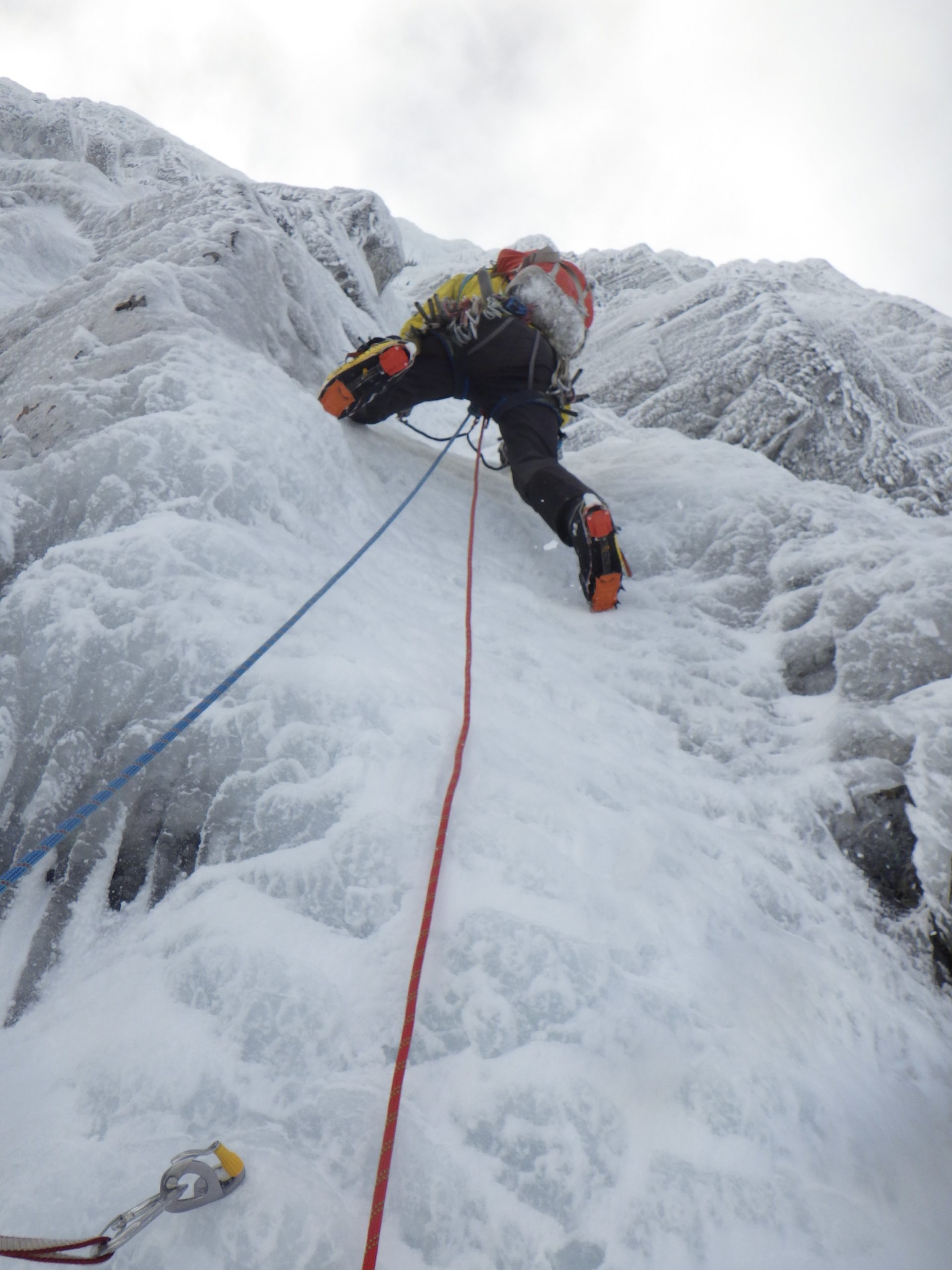
Twin ropes are always used as a pair, just like half ropes. The difference here is that these are essentially two thinner strands of rope designed to do the job of a Single rope. Here, both ropes are clipped in to every runner. This is because an individual strand is not designed to take a lead fall. These ropes are rarely used or seen in Britain. Twin ropes are usually between 7.5mm and 8mm in diameter.
These tend to be used for alpine climbing. The benefit of using twin ropes is that it allows you to abseil from the route the length of one rope, as you have 2 tied together. These also tend to be thinner, hence lighter.
Static ropes aren’t actually static (lacking in movement), but this is what they are referred to in the industry. These have low stretch properties, and are not used for climbing purposes. They are designed not to stretch under load. These tend to be thicker ropes 10.5mm and bigger, hence harder wearing than your dynamic rope. These are not designed for climbing and falling on. Never lead climb on a static rope!
These tend to be used as part of a fixed system, ie rope access work, abseiling, caving, etc…
Climbing ropes are available in various diameters, each offering distinct advantages. Generally, thinner ropes are lighter, while thicker ones boast greater durability and longevity. Additionally, thicker ropes typically exhibit enhanced capacity to withstand multiple falls compared to their thinner counterparts.
It’s important to consider that the diameter of your rope influences its compatibility with different belay devices. Certain devices may not be suitable for use with extremely thin or thick ropes. Refer to the printed diameter size on your belay device or consult the manufacturer’s user manual for guidance.
So, when to use a thicker or thinner rope?
For scenarios where a rope will endure frequent usage, such as big walling, sport climbing, top roping, or in areas with abrasive rock surfaces, opting for a thicker rope is advisable.
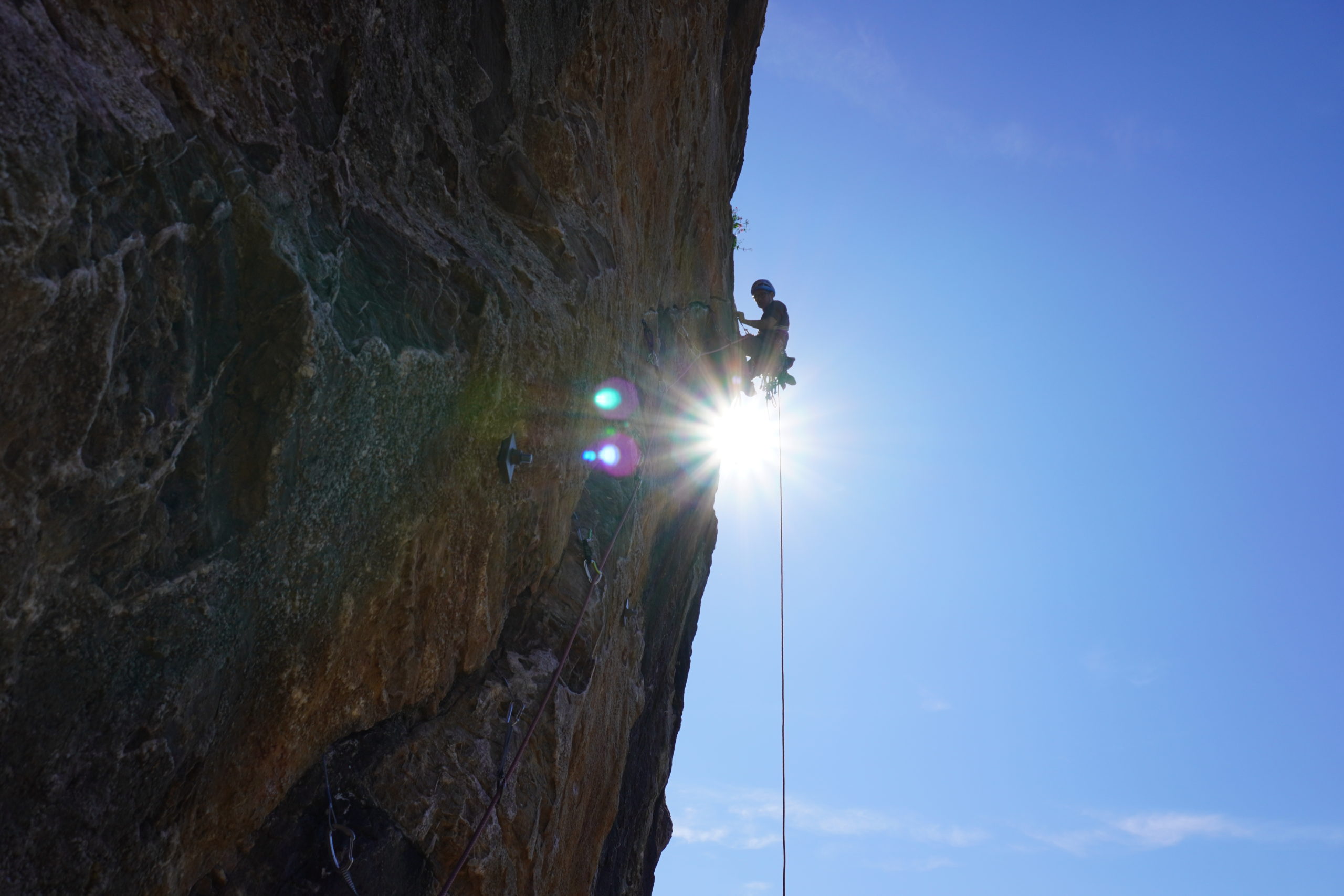
Conversely, if weight is a critical factor, favouring a thinner rope is prudent. Like long or hard sport routes, trad climbing, ice climbing, mixed climbing, alpine climbing, where weight is a priority. However, it’s important to note that thinner ropes may be more susceptible to abrasion.
The length of rope you buy depends on so many aspects. A shorter rope means less weight to carry, a longer rope gives you more options. So, lets break it down for each discipline in climbing, to make it easier to understand. If you are unsure if your rope is long enough, tie a knot in the end.
get a rope that is twice the length of the routes you climb at your local gym (so, you are able to lower the climber to the ground). Plus a little bit more, which is for tying in. Generally, a rope of 30-50m will suffice, depending on the height of the walls of the climbing gym. If the rope you buy is a bit longer, it means you can chop small sections off when the ends get worn, without having to fork out on a brand-new rope.
This depends on the crags you visit. Generally speaking, 50-70m will be enough for most sport climbing crags in the UK. When travelling abroad, sometimes an 80-100m rope may be needed for those super long routes.
Here people mostly tend to use between 50-60m. 60m gives you more options, but more weight to carry. And this depends on the area you tend to go climbing. For example, when going winter climbing in the West Highlands of Scotland, 60m tends to be useful for those long mountain routes, whereas over on the Cairngorms, 50m will do.
This is where personal choice and objectives will dictate which rope length to go for. Some people like to have a thin shorter rope for glacier travel, and another for climbing. Others prefer a one-does-all approach. Here is what I prefer, but please do your own research depending on your objectives.
I prefer to use a 60-70m rope, together with a superlight tag line for abseiling.
Again, the length of the rope used for big walling depends on the climbing objectives. This can range from 50-70m, dependant on the length of the pitches and the available retreats if any.
40m is more than plenty on UK summer scrambling routes.
A standard climbing rope is made of two parts: the dynamic stretchy core, and the colourful protective sheath. Typically, the core and the sheath are manufactured separately and are not connected together. A Unicore rope is where the sheath and the core are bonded together. The benefit of this is that there is no sheath slippage. This is especially useful when going sport climbing or when using the rope for ascending on, where the teeth of the ascender sit in the sheath only.
Untreated ropes can absorb 50% of their own weight in water. This would obviously make ropes much heavier. Also, when ropes absorb water, and they freeze, it makes them harder to handle. Moreover, wet ropes are not so great for falling on, as there are water molecules to displace in the wet rope, which makes them less stretchy, hence more energy will be generated on the falling climber, and the gear.
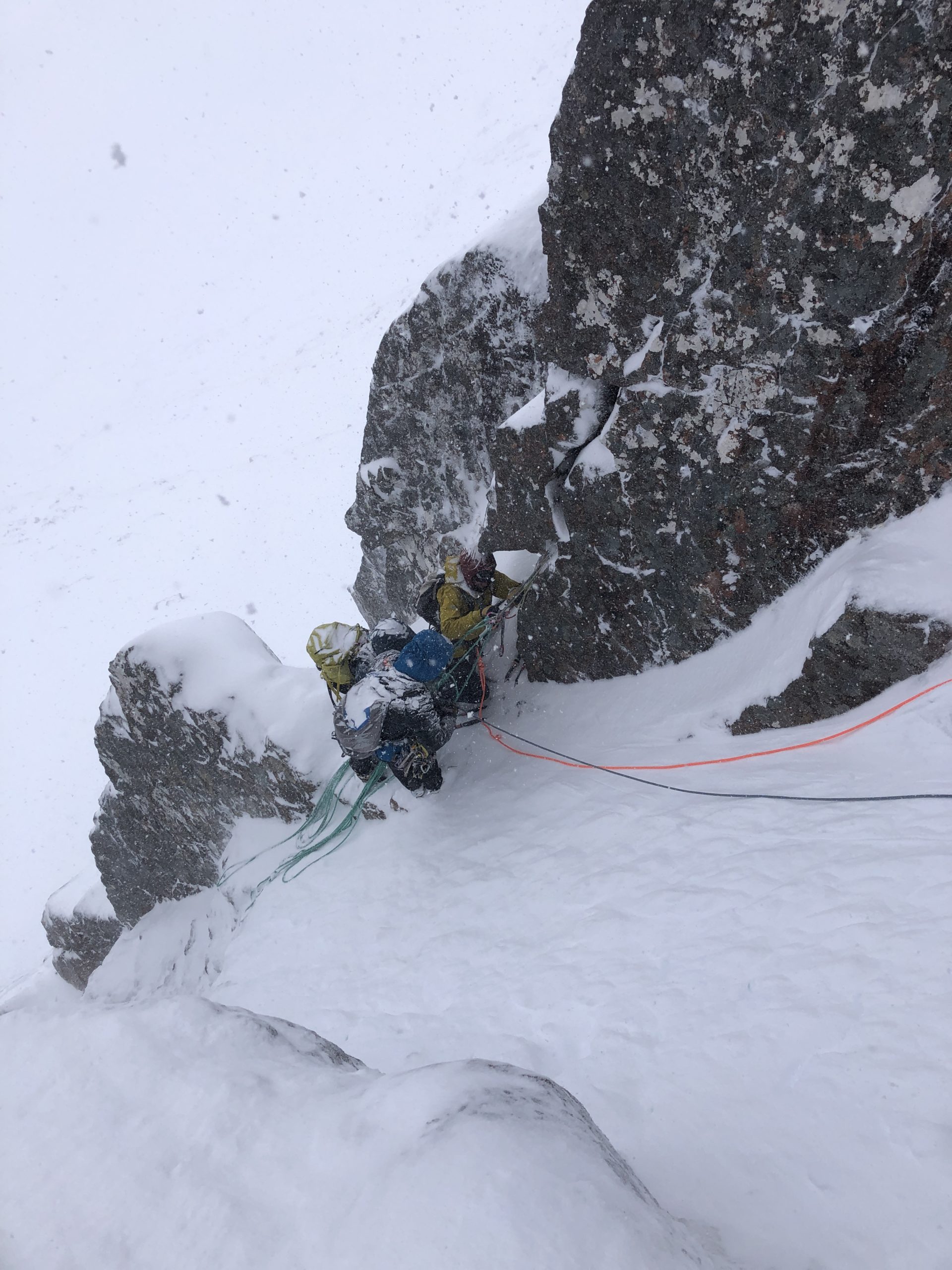
Dry treated ropes are particularly quick drying, absorb virtually no water and are resistant to freezing in cold temperatures. Due to their minimal water absorption (1-2 %), Dry treated ropes hardly increase in weight. As such, they continue to perform well and provide high safety reserves even in wet conditions.

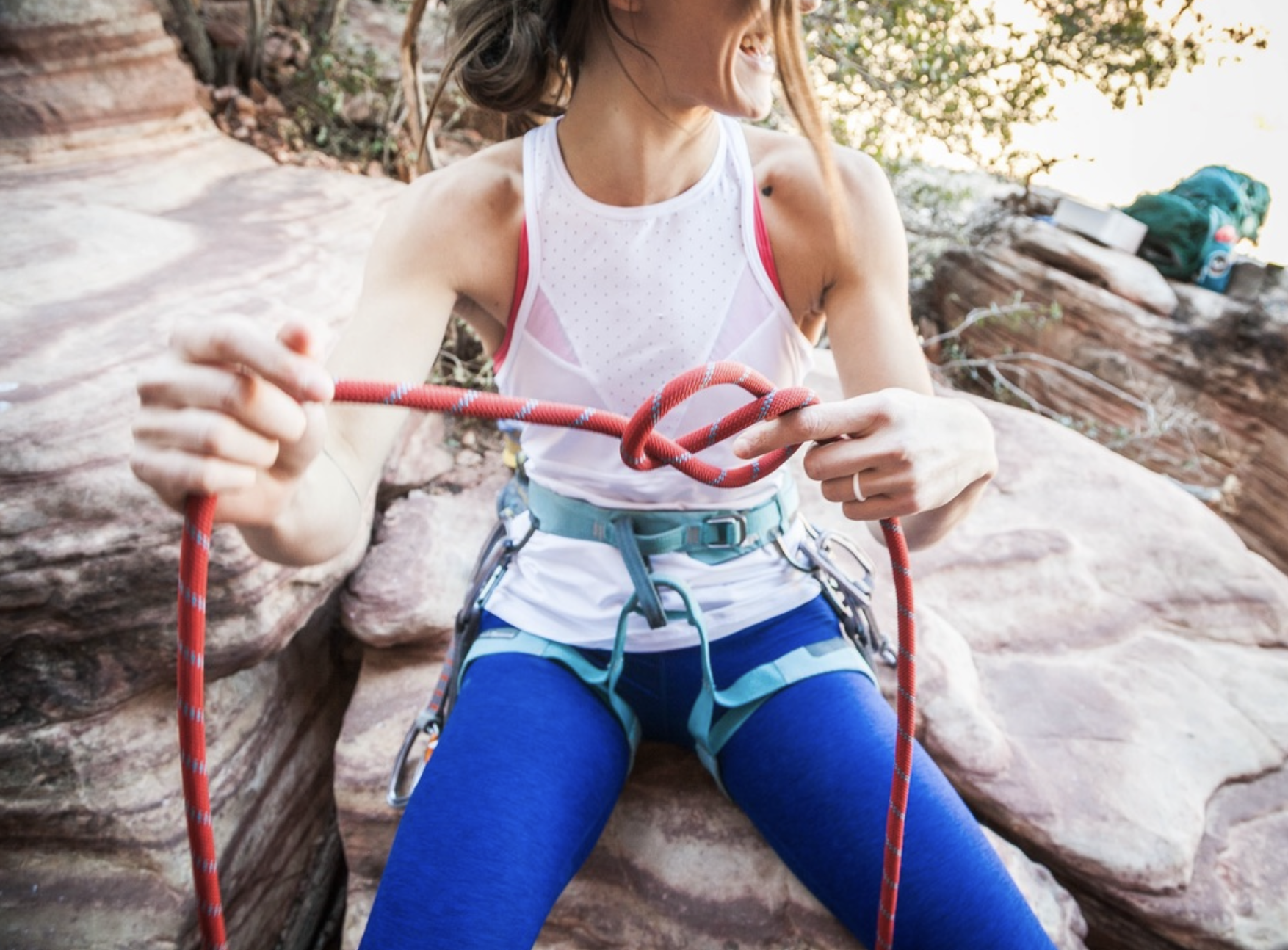
Keep it out of the dirt. Grains of rock and sand can cut tiny fibres inside the rope.
Keep your rope away from sharp edges and loose rock by extending your gear.
Wash your rope occasionally in lukewarm water and allow it to dry in the shade. Prolonged UV light can damage your rope just like it can damage your skin.
Store your neatly coiled rope in a cool, dry place out of direct sunlight and away from acidic chemicals.
Turn rope around after falls, elongation takes place, let it rest 15 minutes
Buy from recommended manufacturer and retailer, not china or amazon. Your life hangs on the end, sure it worth more than the few pennies you save.
Be aware, textiles have a limited lifespan. Check the manufacturer’s guidelines for more details.
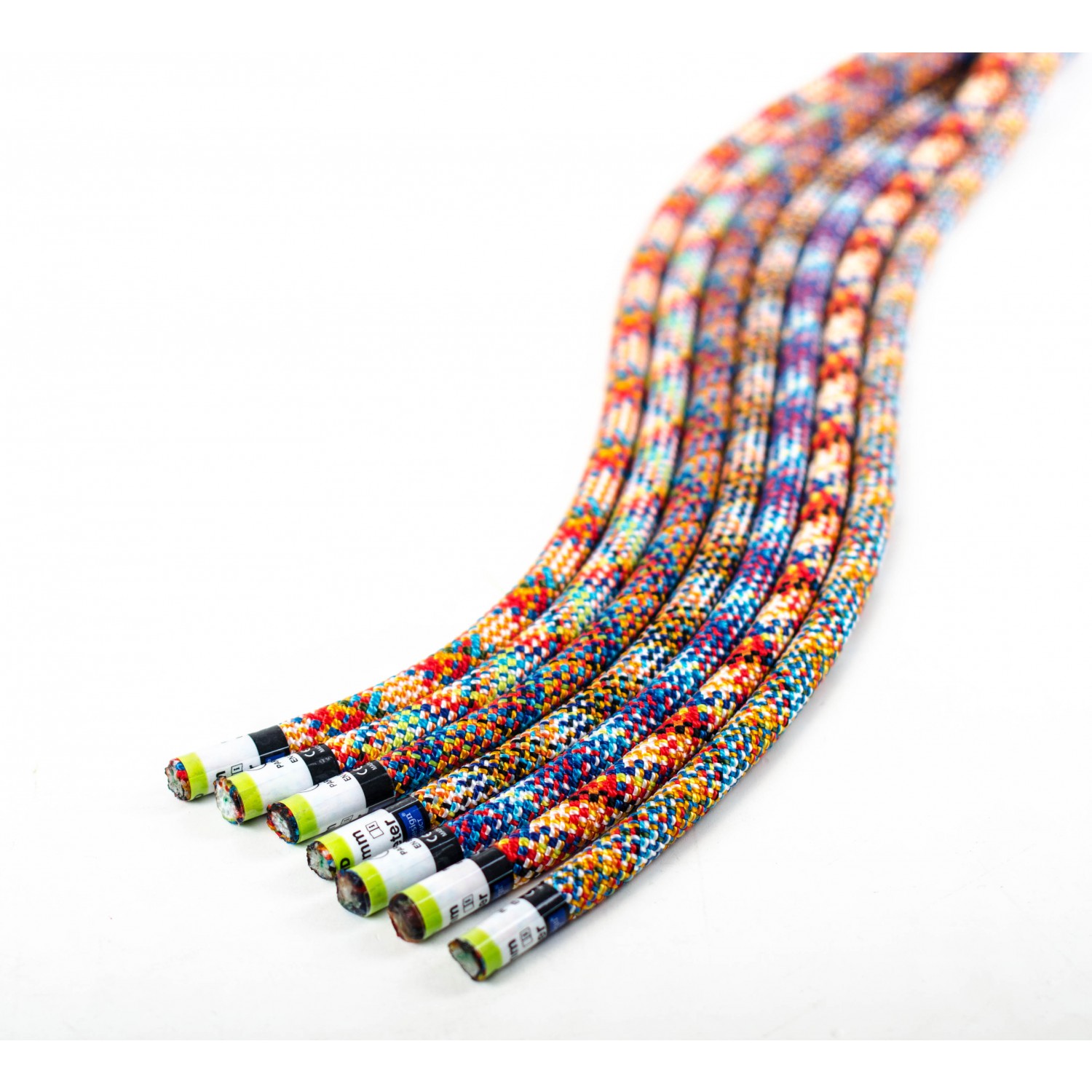
It’s wise to vary which end of the rope you climb on to ensure even wear. Alternating ends helps prevent twists and kinks. Occasionally, pull the entire rope through the belay anchor to straighten it out. However, this advice only applies if your rope matches the route length, like using a 70-meter rope for routes of 25-30 meters. Using a longer rope for shorter routes, such as at a climbing wall, is not recommended. Constantly changing ends can push sheath slippage inward, making it hard to manage rope slack. It’s crucial to buy the right length of rope for your climbing needs to avoid unnecessary excess. Consider owning ropes of different lengths: a 50-meter rope for shorter crags, a 70-80 meter rope for longer routes, and a 40-meter rope for gym climbing.